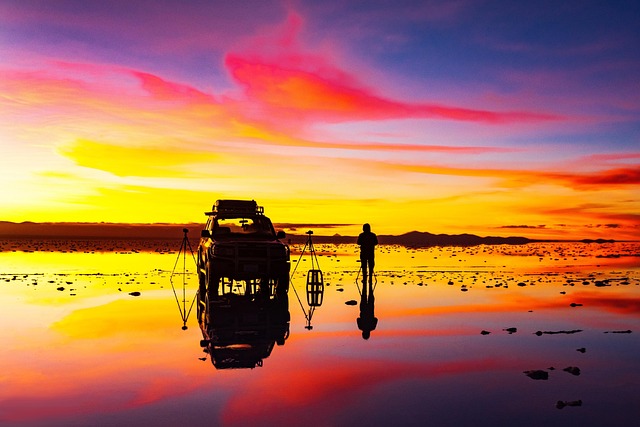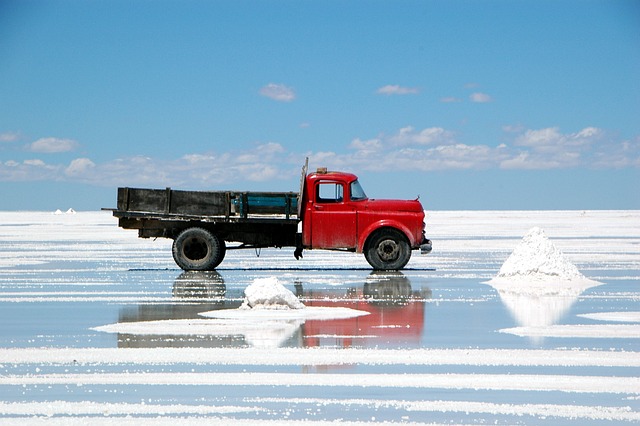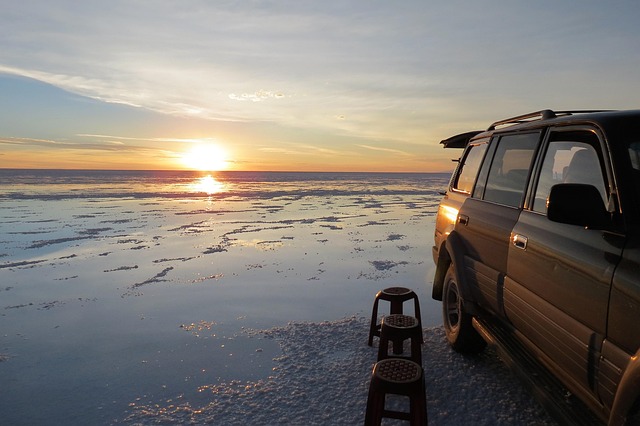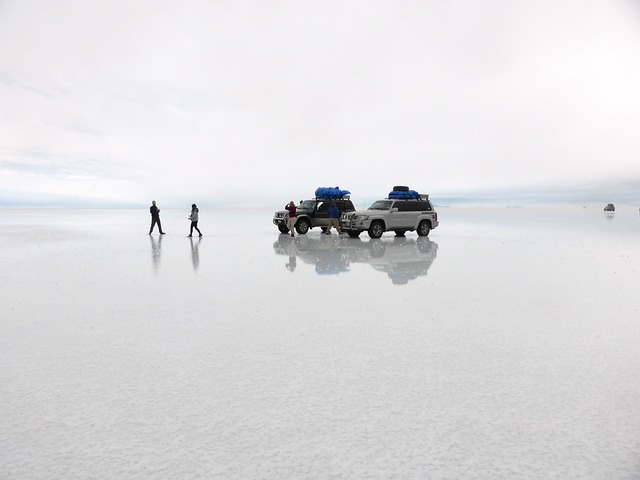
Uyuni, Bolivia - Deep in the heart of Bolivia's Potosí department lies the Salar de Uyuni, the world's largest salt flat, a breathtaking expanse that captivates travelers with its surreal beauty and holds significant global economic potential.
Without a second's hesitation, I can answer if someone asks me about the best place I've ever been: Bolivia's Uyuni Salt Flats.
Famous as the world's largest mirror and a spot where many travelers capture their life's best photo, the Uyuni Salt Flats in Bolivia are where the sky is the ground and the ground is the sky. In this place where everything is symmetrical like a decalcomania, only the distant mountains and the stars in the night sky guide the journey.
Even someone who has never heard the name 'Uyuni' will immediately add it to their list of must-visit destinations before they die if they see just one photo of this place. That's how much the Uyuni Salt Flats are an unmissable part of any South American trip.
Located in the Potosí department of Bolivia, the Uyuni Salt Flats were formed when a sea, uplifted by tectonic shifts, melted 20,000 years ago, creating a vast salt lake in the area. Subsequently, the arid climate caused all the water to evaporate, leaving behind salt crystals that formed the current salt flat terrain. With an area of 1200 square kilometers, it's 20 times the size of Seoul and slightly larger than Gyeongsangnam-do in Korea. The total amount of salt is estimated to be at least 10 billion tons.
Recently, it has been discovered that lithium, a fundamental material in cell phones, electric vehicles, and secondary batteries, is buried here, with reserves accounting for half of the world's total.

The Uyuni Salt Flats have distinct wet and dry seasons. The wet season is from December to March. During the dry season, hexagonal patterns of dry, pure white salt fields stretch to the horizon, resembling a giant honeycomb.
However, to witness the epithets 'the world's largest mirror' or 'heaven on earth,' you must visit during the wet season. After recent rainfall, there needs to be ankle-deep water. Any more or less, and the reflection will be distorted. The wind must also be still so that the image reflected in the water remains undisturbed. We call this 'water-filled Uyuni.'
In the quiet and tranquil town of Uyuni, the busiest and most crowded place is in front of the travel agencies on the central street. Traveling through the Uyuni Salt Flats is nearly impossible without a local travel agency. You need to drive a four-wheel drive jeep over the uneven salt crystals covered in water, and it's necessary to avoid getting lost in the vast white desert with no landmarks. There are widespread rumors of people getting lost in the desert and being dramatically rescued after five days, and even some who have gone missing altogether.
Day tours departing from Uyuni town are largely divided into sunrise, day, and sunset tours. Sunrise tours usually run from 3 AM until just after sunrise, day tours from 10 AM until before sunset, and sunset tours from around 3 PM until after sunset.
Around 1 PM, we set off in a jeep to find the water-filled Uyuni. In Uyuni, the sky is the ground, and the ground is the sky. Everything floating above the horizon is symmetrically reflected like a decalcomania. It was like divine art created by light and salt. Just as the sense of space and time disappeared in the completely white, dry salt, the heavenly scenery I had dreamed of unfolded before me. As a sign of our joyous arrival in heaven, the jeep carrying us enthusiastically spun in circles and stopped in the middle of this paradise.

Uyuni's space and time are completely different from what we know. Without any sense of perspective, it's impossible to get your bearings, and even estimating the passage of time is difficult. There's a popular belief that Salvador Dalí, a representative surrealist painter, was inspired by Uyuni. Like his works, the words 'surreal' and 'unreal' define Uyuni.
Wanting to preserve the heavenly Uyuni forever, I continuously pressed the camera shutter. How much time had passed? Suddenly, I looked up and saw the sun falling from the sky and the sun rising from the ground meet at the horizon. Before I could even understand what was happening, the two suns slowly merged into one and then disappeared. For a while, I stood blankly under the dimly rising two moonlit lakes.
At 3 AM, the sunrise tour began. The guide started driving the jeep in the darkness. It was already amazing how he could drive relentlessly towards the water-filled Uyuni in the daytime salt desert without any signposts, but navigating and driving in the pitch-black darkness was even more astonishing. When asked how he found his way, he replied that during the day, he uses the distant mountains as landmarks, and at night, he follows the stars in the sky.
The Milky Way, embroidered above the clear salt lake, transcends the realm of imagination. Who could imagine stars pouring down from overhead and flowing under their feet? Only the cold wind brushing against my nose reminds me that all of this is not a dream.
To truly enjoy Bolivia, it's best to take a 2-day, 3-night off-road tour along with the Uyuni Salt Flats day tour. This tour travels from Uyuni in Bolivia to Atacama in Chile, or vice versa.
Usually, five to seven travelers move together in a jeep driven by a driver who can also cook. Because you drive on natural, unpaved roads, you can fully experience the nature of Bolivia.

The diverse sights in this great nature are unimaginably vast, bizarre, or dazzlingly beautiful. From hotels built of salt and a train cemetery to colorful lakes and rugged wilderness, strangely shaped rocks rising in the middle of the desert, natural hot springs, and countless stars densely packed in the dark sky, a journey with no room for boredom constantly unfolds.
Walking along the Uyuni Salt Flats in Bolivia towards Atacama in Chile allows you to see colorful lakes and a sky filled with numerous stars. Among the most distinctive sights are the lakes in various hues such as green, red, pink, and white. These colorful lakes are formed by the different types and concentrations of minerals in the water. The snow-capped peaks in the background add to the surrealistic scenery.
The journey takes place within national parks where wildlife protection laws are enforced. You can encounter various animals rarely seen elsewhere, such as flocks of pink flamingos, llamas and vicuñas that only inhabit South America.
Llamas are camelids; their heads resemble camels, but they are smaller and have pointed ears. Vicuñas are also camelids but look more like deer.
[Copyright (c) Global Economic Times. All Rights Reserved.]






























